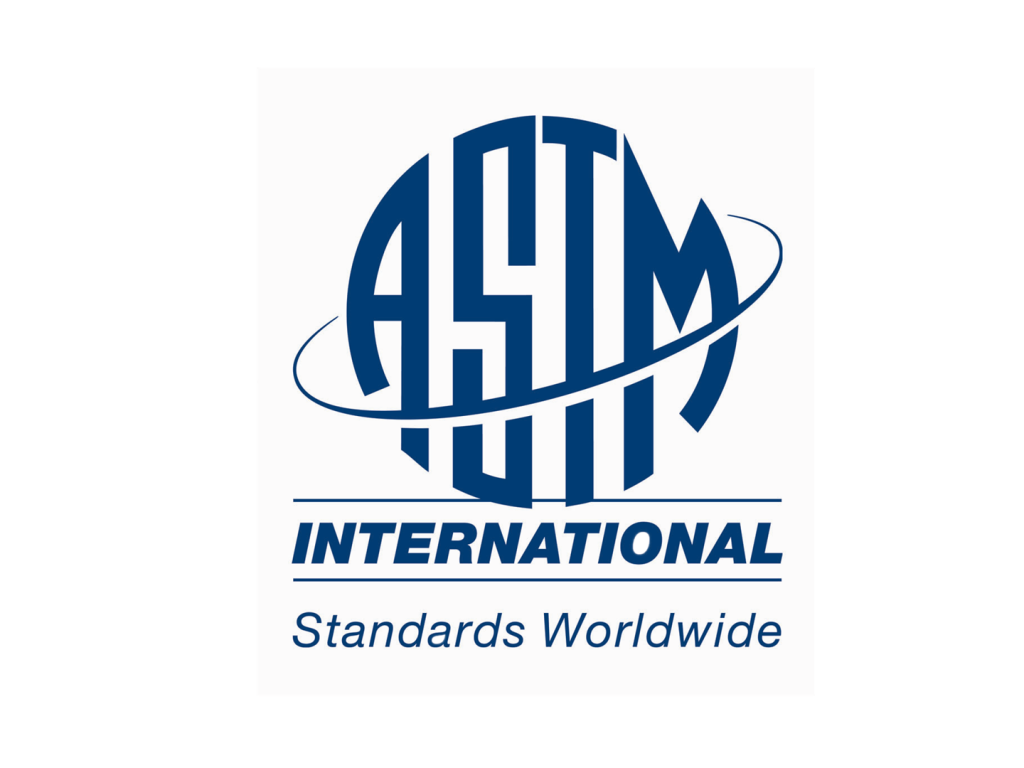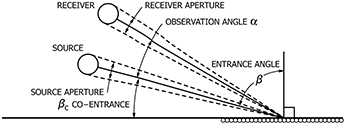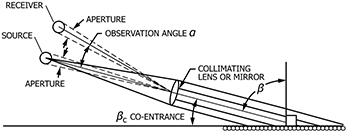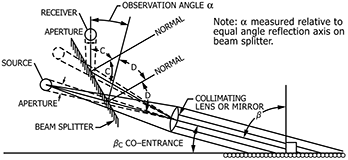
ASTM-E1710-18
Standard Test Method for Measurement of Retroreflective Pavement Marking Materials with CEN-Prescribed Geometry Using a Portable Retroreflectometer
Scope
1.1 This test method covers measurement of the retroreflective properties of horizontal pavement marking materials containing retroreflecting beads, such as traffic stripes and surface symbols, using a portable retroreflectometer that can be placed on the road delineation to measure the retroreflection at a prescribed geometry.
NOTE 1: The restriction to bead based materials is for the purpose of ensuring a sufficiently gradual optical response function (from points of the source aperture to points of the receiver aperture) to allow generous sized instrument source and receiver apertures.
1.2 The entrance and observation angles of the retroreflectometer affect the readings. As specified by the European Committee for Standardization (CEN), the entrance and observation angles shall be 88.76° and 1.05°, respectively.
1.3 This test method is intended to be used for field measurement of pavement markings but may be used to measure the performance of materials on sample panels before placing the marking material in the field.
1.4 This standard does not purport to address all of the safety concerns, if any, associated with its use. It is the responsibility of the user of this standard to establish appropriate safety, health, and environmental practices and determine the applicability of regulatory limitations prior to use.
1.5 This international standard was developed in accordance with internationally recognized principles on standardization established in the Decision on Principles for the Development of International Standards, Guides and Recommendations issued by the World Trade Organization Technical Barriers to Trade (TBT) Committee.
2. Referenced Documents
2.1 ASTM Standards:
D4061
D6359
E177
E284
E691
E809
For referenced ASTM standards, visit the ASTM website, www.astm.org, or contact ASTM Customer Service at service@astm.org. For Annual Book of ASTM Standards volume information, refer to the standard’s Document Summary page on the ASTM website.
2.2 Other Standard:
CEN EN 1436 Road Marking Materials—Road Marking Performance for Road Users
CEN EN 1436 Available from European Committee for Standardization (CEN)

FIG. 2a Angles and apertures for non-collimating portable retroreflectometer

FIG. 2b Angles and apertures for collimating optics portable retroreflectometer

FIG. 2c Angles and apertures for portable retroreflectometer with collimating and beam splitter design
FIG. 2 Optics Geometry Diagram for Portable Road Marking Reflectometer:
a) Angles and Apertures for Non-Collimating Portable Reflectometer;
b) Angles and Apertures for Collimating Optics Portable Reflectometer;
c) Angles and Apertures for Portable Reflectometer with Collimating and Beam Splitter Design
5. Significance and Use
5.1 The quality of the stripe is determined by the coefficient of retroreflected luminance, RL, and depends on the materials used, age, and wear pattern. These conditions shall be observed and noted by the user.
5.2 Under the same conditions of illumination and viewing, larger values of RL correspond to higher levels of visual performance.
5.3 Retroreflectivity of pavement (road) markings degrade with traffic wear and require periodic measurement to ensure that sufficient line visibility is provided to drivers.
5.4 For a given viewing distance, measurements of RL made with a retroreflectometer having a geometry corresponding to that viewing distance are a good indicator of the visual ranking of material measured.
5.5 As specified by CEN, the measurement geometry of the instrument is based on a viewing distance of 30 m, a headlight mounting height of 0.65 m directly over the stripe, and an eye height of 1.2 m directly over the stripe.
5.6 It shall be the responsibility of the user to employ an instrument having the specified observation and entrance angles.

